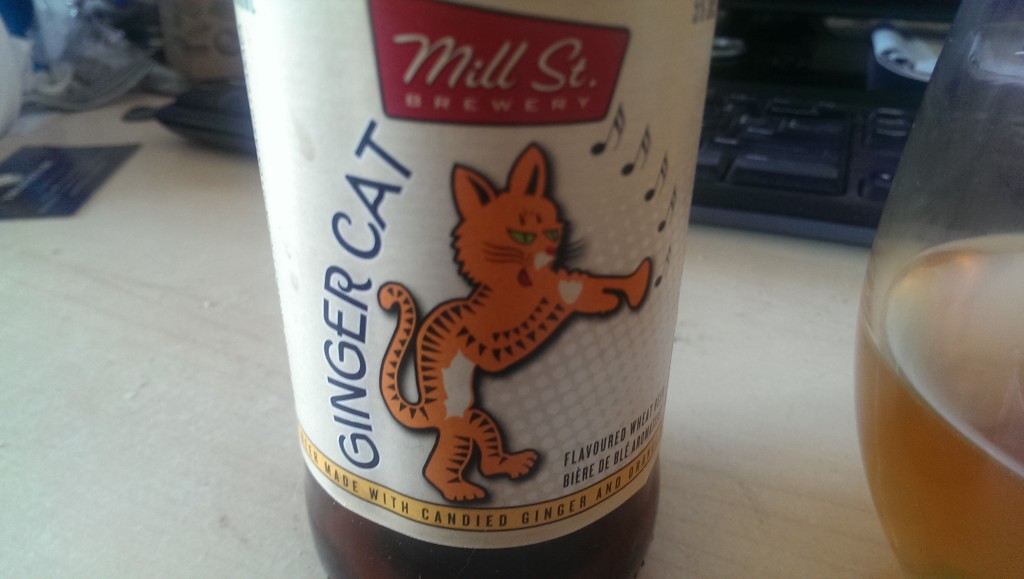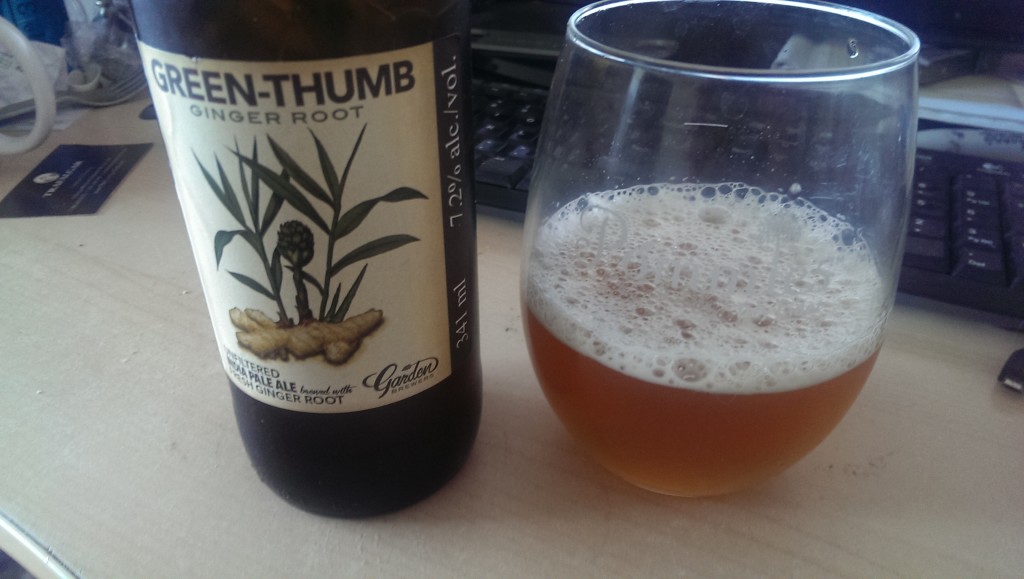Ginger beer seems to be having a moment in Ontario. Well, not “Ginger beer” so much as beer with ginger as an ingredient. If you’re from here you’ll find that odd. If you’re from South London you’ll find it ginger beer.
Ginger is a pervasive flavour. It’s the kind of thing you get in holiday baking for that very reason. It’s a bright flavour in the midwinter to ward off the dark of night. That said, if you were asked to tell me what ginger tastes like, you probably wouldn’t have any adjectives to use that didn’t reference its name. I wouldn’t have either. That’s why I’m researching the ingredient.
When faced with a culinary ingredient I don’t know about I go to Harold McGee’s extremely useful and comprehensive On Food and Cooking. On Ginger he has this to say:
It’s a pungent, aromatic rhizome of Zingiber officinale that is distantly related to the banana. It’s a member of a genera associated with galangal, grains of paradise, cardamom and turmeric. It was domesticated in southern Asia and had made the Mediterranean by the Classical Era. The root is about 60% starch although most of its use is now longer in a dried form for baking, but fresh in the manner of Asian Cuisines. Depending on the terroir the ginger is from it can be quite bright and lemony with floral, citrus, woody and eucalyptus notes – and mild pepper-like pungency that complements other flavours without dominating them.
Seriously. Go buy Harold McGee’s On Food and Cooking. There’s a marvelous chart on page 392 that tells you what aromatic compounds are in spices and herbs. With just the smallest bit of research you can find out how they complement the terpenoids in myrcene and humulene. If you want to brew a spiced beer, this is your bible.
The chart tells us that the fresh aromas are from phellandrene and cineole. The citrus is from citral. The floral component is linalool. The woody component is zingiberene. This is all massively useful if you have the ability to think about food on a purely scientific crossword puzzle level.
Here’s the important thing: Gingerol.
Gingerol is the compound that makes ginger gingery. It’s similar to capsaicin and piperine, which give chilies and peppercorns their flavours. If you cook ginger, gingerol becomes zingerone. Zingerone is less pungent and is sweeter. When you bake with ginger or stir fry ginger, that’s the flavour you get. When you dry ginger, you get shaogols, a compound about twice as pungent as fresh ginger. When you candy ginger, you get cavities.
What this means is that if you want to make a beer with ginger in it, you need to be mindful of the ingredient. If you put it in the boil or the whirlpool, you lose aroma to sweetness. If you use powdered ginger, you’ll get a lot of the aroma, but some of the delicate terpenoids will flash off if you add them to the boil. You’ll get shaogol ginger and nothing else. You’re unlikely to get the flavour of pickled ginger because the ginger they use for Gari is harvested earlier. You might get that sweetness if regular ginger is added to a hot liquid.
The Beers

Vikings didn’t put up with this Ginger nonsense. They referred to themselves as “Erik The Red” and “Lars The Burnt Sienna” and “Magnus VeryDarkOrangesson”
First up, we’ve got Double Trouble Brewing Company’s Revenge Of The Ginger. It’s always an interesting choice when you name a beer after a pun. I feel like they could have made Revenge Of The Ginger just about anything conceptually as long as it had a reddish hue. In this instance, they’ve referenced the fact that the beer contains ginger and juxtaposed it with the fact that Nathan Dunsmoor will combust spontaneously if exposed to sunlight.
I have some problems with the beer’s construction. The aroma certainly contains ginger, the ingredient made unrefutable by the lingering burn, but the hops don’t really seem to complement it. I think that the northern brewer and saaz hops bridge to the ginger in a woody, humulene dense place and from a sensory perspective I found some distracting malt astringency (probably from whichever malt is imparting the red colour). The upshot is a beer that divides in the mid palate and results in the sensation of the hops fighting the ginger. It’s thematically consistent, but not terribly enjoyable.

Heathcliff, Heathcliff, no one should terrorize the… oh wait. Let’s avoid the lawsuit and call it “Ginger Cat”
Second, we’ve got Mill Street’s Ginger Cat. It is a part of their Summer Mix Pack, although I feel like a wider release on patios as a one off would have been clever. The Mix Pack seems to be successful for Mill Street, so what do I know?
Ginger Cat is sort of scaredy on the ginger front. It’s not a big fresh ginger character. They’re using candied ginger and orange peel. It’s a wheat beer with some amber barley malt and a Belgian ale yeast. Stylistically, this is probably a better fit for the candied ginger: Essentially a modified Witbier. The end result is quite sweet at the top and a slight wheaty tang redeems it at the back end. It’s certainly a refreshing summer beverage, but there’s not a lot of head retention. It’s interesting, but if you’re a ginger fanatic, you might find the additions a bit gingerly.

Green Thumb. I have a black thumb. The nice people from Pommies delivered an apple tree last year. It’s now only fit for kindling. 🙁
Finally, we’ve got Garden Brewers ostensibly out of Hamilton, but contract brewed at Black Oak here in Toronto. For my money, the Green Thumb IPA displays the best balance of the lot. The beer is essentially dry-gingered. Fresh Ginger is added to the beer after fermentation, which ensures that you get all of the delicate flavours that you’re meant to get in addition to the big spicy gingerol character. The choice of hop is also fairly inspired. They’re using the infrequently championed Bullion, which is an offspring of a wild Manitoban variety discovered something like a hundred years ago. For the most part people don’t use it because it’s a little vegetal and the flavour profile leans towards blackcurrant.
The aroma makes no bones about the concentration of ginger in the beer and the ginger dominates throughout. The hops manage to dance around the outside of that core flavour and pick out small detail. The palate does split on the finish between a dry character on the palate and a lingering retronasal ginger heat. It’s a clever use of the flavours and I find myself surprised by the fact that it’s 7.2% alcohol. It seems lighter than that, but maybe that’s just the freshness of the ginger. I think if I were going to pair it I might try this Venison with Ginger and Garlic or this Venison with Blackcurrant Jus and what looks like parsnip.
Thanks for the article Jordan. I’ve got an Innis and Guinn ‘Melvills’ in front of me right now. Looking forward to a gingery summer.
That’s quite a good one in the traditional ginger beer style.
Nah, it’s also scared to give real ginger bite!
On a side note have you tried the bell city ginger wheat yet?